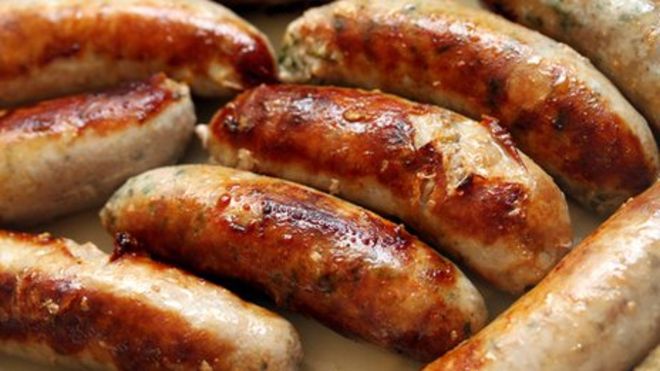Lipids

 B.3 Lipids (5 hours)
B.3 Lipids (5 hours)
Pause for thought
Are saturated fats bad for your heath?

There is real scope for both Nature of Science and Theory of Knowledge in discussing the question, ‘Are saturated fats bad for you?’ For the past forty years the advice from governments and reputable medical bodies has been to consume unsaturated fats rather than saturated fats, as saturated fats lead to heart disease. Even the Nature of Science statement as written in the Guide for this sub-topic states, “Long–term studies have led to knowledge of the negative effects of diets high in saturated fats”.
The advice was based initially on the evidence of work published in 1958 by Ancel Keys in the Seven Countries Study. It found a correlation between saturated fat intake and heart disease. There is now considerable doubt about these findings. Some people claim that in fact twenty-two countries were studied and all the results that did not fit the correlation were ignored. Many studies during the past fifty years have come up with conflicting views and yet the mantra that saturated fats are ‘bad’ for you has persisted.
Several recent meta studies have cast serious doubt on whether saturated fats are bad for you. In 2014 a meta study of 72 published papers involving more than 600,000 participants worldwide produced the conclusion:
“Current evidence does not clearly support cardiovascular guidelines that encourage high consumption of polyunsaturated fatty acids and low consumption of total saturated fats.”
A similar meta-study published in Open Heart, produced by the British Cardiovascular Society, looking at reports of trials before 1983 concludes:
"Dietary recommendations were introduced for 220 million US and 56 million UK citizens by 1983, in the absence of supporting evidence from RCTs (randomized controlled trials).
The debate continues!
Nature of Science
Long-term studies have led people to believe that diets high in saturated fat, cholesterol, and trans-fat have negative effects. This has led to the development of new food products.
Learning outcomesAfter studying this topic students should be able to: Understand:
Apply their knowledge to:
| Clarification notesThe structures of some fatty acids can be found in Section 34 of the data booklet. The names of specific examples of fats and oils do not have to be learned. The structural differences between cis- and trans-fats are not required. International-mindednessThe dietary sources of lipids and the methods used to prevent rancidity vary greatly between countries and cultures |
Teaching tipsThe most essential thing is for students to be able to construct the structure of a fat or oil formed from the condensation reaction between glycerol (propane-1,2-3-triol) and fatty acids and carry out the reverse hydrolysis reaction. The properties of the fat or oil will depend upon the amount of unsaturation in the three fatty acids making up the triglyceride. The degree of unsaturation can easily be determined from the addition reaction with iodine. The other types of lipids (phospholipids and steroids) are harder to ask and answer questions upon. Stress the difference between HDL and LDL and the fact that LDL are formed from saturated fats and are potential harmful as they can line the walls of arteries. The use of omega-3 and omega-6 to characterise the position of the first double bond in fatty acids (particularly linolenic and linoleic acids) is worth covering as they are used in food labelling. Rancidity of fats can occur by hydrolysis to give glycerol and the fatty acids (which give the rancid smell) or by oxidation across the double bonds. When talking about the health problems caused by lipids it is worth including the problem of trans- fatty acids. These are formed during the partial hydrogenation of poly-unsaturated fatty acids and are present in fried foods. They can increase the amount of LDL cholesterol and thus the risk of heart disease. Strangely, SL students are not expected to be able explain the difference between cis- and trans-. | Study guidePages 128 & 129 QuestionsFor ten 'quiz' questions (for quick testing of knowledge and understanding with the answers explained) see MC test: Lipids. For short-answer questions see Lipids questions together with the worked answers on a separate page Lipids answers. Vocabulary list:triglyceride |
Teaching slides
Teachers may wish to share these slides with students for learning or for reviewing key concepts.
Other resources
1. A good video by Bozeman Science on lipids.
2. A really nice video from Applied Science on the hydrogenation of fats. It explains the different types of fats and oils and shows practically how unsaturated fats can be hydrogenated. It also discusses the problems associated with trans fats. (Many thanks to Phil Tuckey a subscribing chemistry teacher from the International Christian School of Vienna who alerted me to this video).
3. A simple PowerPoint from Wisc-Online that you may find helpful.
4. A factual video on hydrolytic and oxidative rancidity by MSJChem.
![]() Hydrolytic and oxidative rancidity
Hydrolytic and oxidative rancidity

 IB Docs (2) Team
IB Docs (2) Team 





















